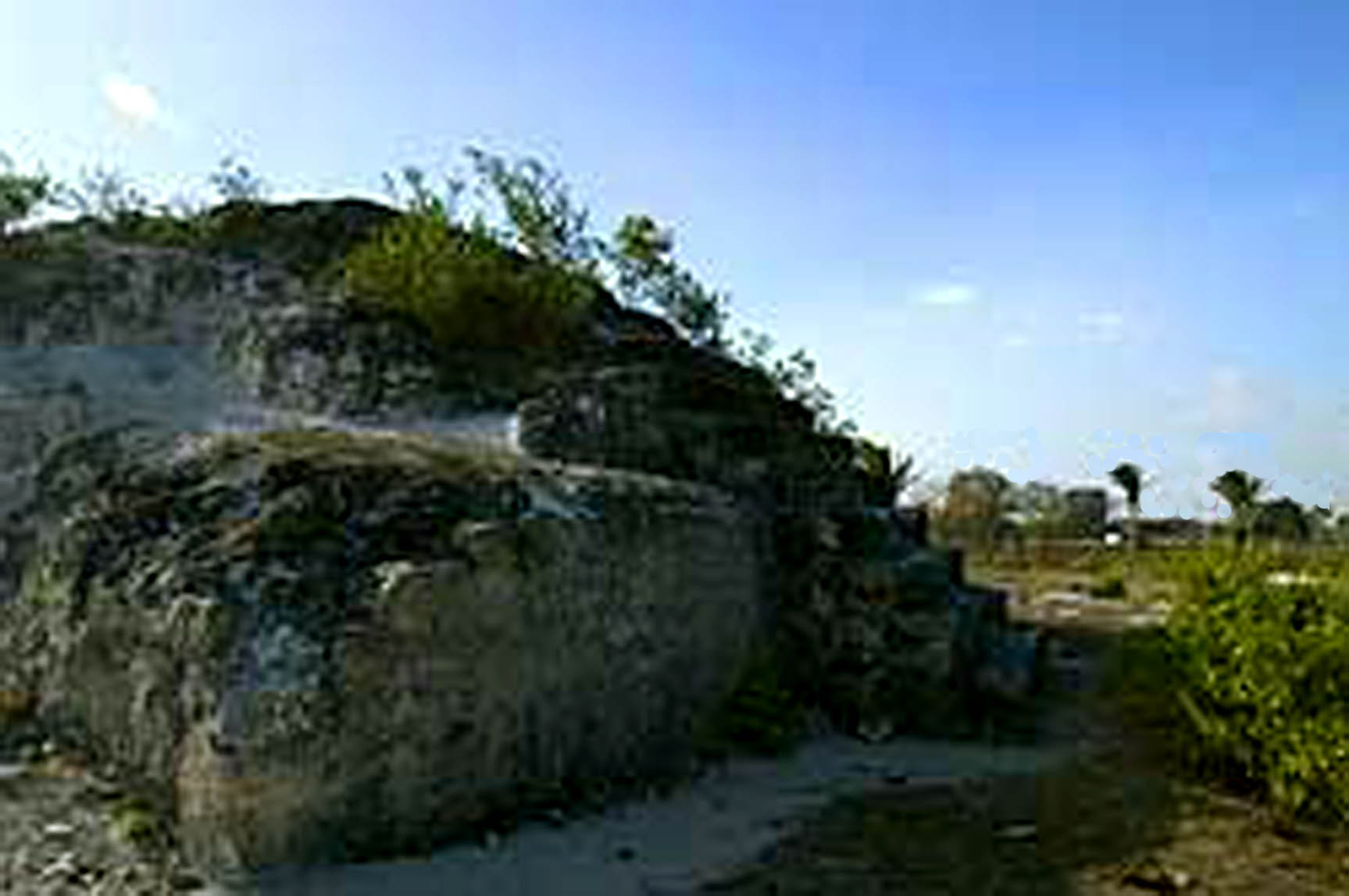Cuello is named for the Rum Distillery which nearly lies within the site itself. Cuello boasts being one of the earliest known Mayan sites, with occupation dating between 2500 B.C.E. and 1000 B.C.E. Conflicting radiocarbon dating's have caused archaeologists to debate the actual age of the site.
Deep excavations have unearthed a complex sequence of construction and reconstruction which spans most of the Pre-classic period. A wide trench excavated at the site has remained open and it is possible to walk back in time as you descend into the hole.
Cuello is classified as a minor ceremonial site. The ceremonial center consists of two side by side plazas. The main temple of each plaza is flanked by civic structures and a small palace. Two underground storage chambers called cultunes, lie within the platform of this ceremonial center.
Some of the people that occupied this site have been buried nearby, giving us a glimpse of the rituals and traditions that the Maya followed. One of the earliest burials is that of a young woman. Her skull was deformed, apparently from use of a forehead sling called a tumpline. An example of a tumpline in use today by the Maya can be seen from a picture at the San Antonio stop of the District Tour.
This young woman lay in a shallow grave cut into the surrounding limestone bedrock. A pottery bowl lay over her face and another lay at her feet. She also wore a necklace of roughly hewed shell beads.
Later burial sites of about 600 B.C.E. contained small jade beads. This is the first example of the use of semiprecious stone in the Mayan area. The source of this jade has been traced to a site 250 miles to the south. This fact is important because it shows that long distance trade existed even at this early date.
Other artifacts found at Cuello support this evidence of long distance trade. Corn grinding utensils such as the manos and metates are made of pink sandstone from the Mayan Mountains over 150 miles away. Archaeologists theorize that the movement of this relatively heavy stone was accomplished through water transport along the coast. The tracing of artifacts and structures from early pre-classic to classic show that the people of Cuello were certainly culturally Maya. The technically sophisticated pottery, the stone tools and the buildings have been clearly demonstrated to be linked to the later pre- classic Maya.
Cuello is very near to Orange Walk Town and is easily reached via a dirt road by car or taxi. Because the area around Cuello is extensively farmed and the site actually sits within a cattle pasture, the site has remains overgrown to protect it until funding and interest can further develop and protect the site.

